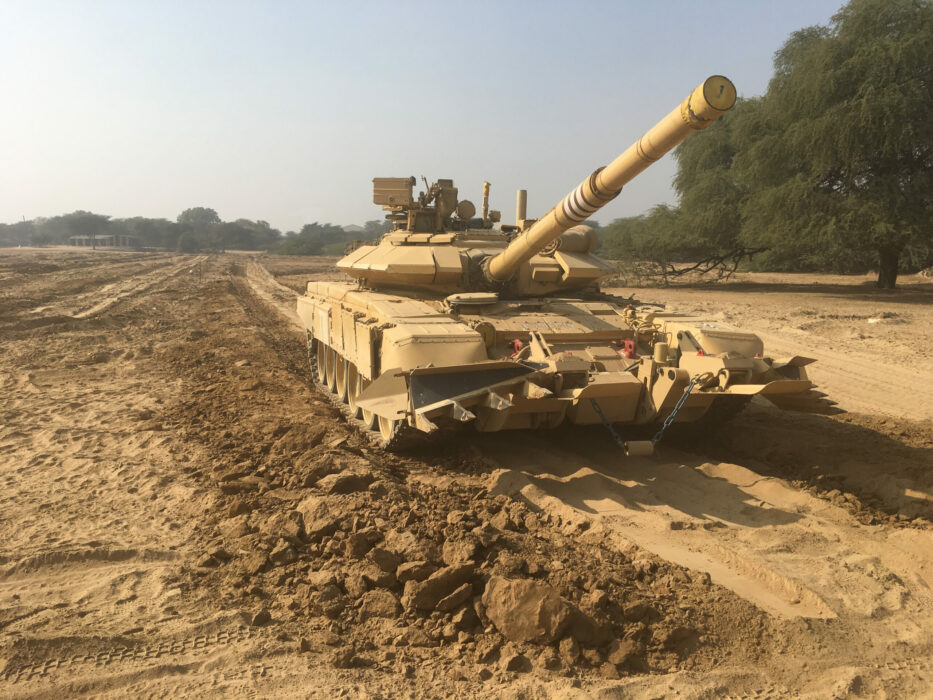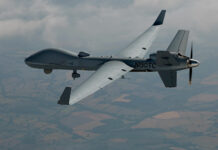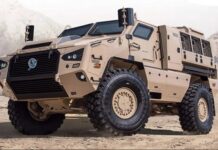India is to move ahead with the ambitious domestic development of a light tank capable of fighting in the mountainous Ladakh region that borders China, the New Indian Express reported on 20 September 2022, citing “sources in the security establishment.”
It is understood that a prototype of the first vehicle is to be produced by the end of 2023 as a result of collaboration between the company Larsen and Toubro (L&T) and India’s Defence Research and Development Organisation (DRDO). Hanwha had also expressed interest in the programme, offering its 105 mm armed K21-105 in a potential production deal with L&T in 2021. Once the prototype has completed extensive trials, it will progress to tender and is expected to be built in India, which would require some form of technology transfer if a foreign manufacturer is involved.
Requirements
The tank is to be known as ‘Zorawar’ after Indian general Zorawar Singh Kahluria, who is credited with conquering the Ladakh region in 1835. The Indian MoD released an ambitious request for information (RFI) in 2021, approval for which was granted shortly after the 2020 stand-off with China in the Ladakh region.
The RFI was extensive, and indicated an interest in procurement of 350 domestically-manufactured vehicles with good mobility on most terrains, capable of operating at high altitudes, carrying multiple forms of protection including Explosive Reactive Armour (ERA), an Active Protection System (APS), and signature management solutions. The RFI also indicated that the vehicle should:
- be capable of launching missiles
- carry a large calibre gun
- weigh no more than 25 tonnes
- include the ability to engage UAVs.
The New Indian Express’ source added that the design is expected to include Artificial Intelligence (AI) and UAV integration.
Despite recent progress, it is far from certain that the programme will reach a successful conclusion. A very similar RFI was issued by the Indian MoD in 2009, which covered wheeled and tracked vehicles for use at high altitudes and in a reconnaissance role as part of India’s ‘Cold Start’ strategy. The RFI was driven by an increase in tensions with China at the time, industry press reported. India has had extensive success introducing locally-manufactured T-90S Main Battle Tanks (MBTs) and BMP-2 Infantry Fighting Vehicles (IFVs) into service, and the first licence-produced K9 Vajra self-propelled howitzer (SPH) was displayed by L&T in 2020.
Previous Difficulties
However, those projects that have been developed from scratch in India have often met with significant resistance. The ARJUN MBT is the most notorious example of a troubled development programme, but it is not alone. India’s domestic INSAS assault rifle became one of the primary rifles of Indian forces from 1998 after a protracted and delayed development process. Its performance in the 1999 Kargil war was lacklustre, and the Indian Army was driven to search for a replacement, which it found in the AK-203. Additionally, the country’s attempts to modernise its fleet of T-72M1s have been ongoing since the 1980s without reaching a successful conclusion, leading to reports that large portions of the fleet are inoperable.
The requirements for the ZORAWAR are also ambitious. At high altitudes, internal combustion engines lose power – around 3 per cent for every 305 m (1,000 ft) of elevation due to oxygen density decreasing with altitude. This means that the 581.6 kW (780 hp) engine of India’s basic T-72, would produce approximately 494.4 kW (663 hp) at the highest point in the Ladakh region, whereas the 745.7 kW (1,000 hp) engine of India’s T-90S fleet would be reduced to 633.8 kW (850 hp). This in turn leads to a reduction in power-to-weight ratios, as well as a loss of mobility and manoeuvrability. For comparison, China’s light tank, the ZTQ-15, is powered by a 745.7 kW (1,000 hp) engine at a maximum vehicle weight of 30 tonnes. For the vehicle to be capable of navigating the Ladakh region and providing greater mobility than India’s existing tank fleet, it will need a suitably powerful and robust engine.
There is also the matter of survivability at the stated weight, which is likely to be an immovable requirement for the programme, if it is to meet its mobility requirements. The K21-105 for example, weighs 25 tonnes according to Hanwha. It would theoretically be capable of meeting the mobility requirements with its 559.3 kW (750 hp) engine, however its armour is unlikely to be designed to resist much more than 30 mm cannon rounds across the frontal arc. The addition of an APS to increase this level of protection – especially against anti-tank missiles, but would increase its weight, as would an ERA suite. Such solutions would all likely come at the expense of its mobility unless a more powerful powerpack were to be used. This would likely increase the vehicle’s weight yet again, leading to another weight-mobility spiral.
Alternatives
Of course, the RFI is not definitive, and it is possible that the Indian Army will revise its requirements to procure a vehicle that will enable it to match the capabilities of the ZTQ-15 and provide overmatch against insurgents in the Kashmir region, as well as the light infantry that China uses for operations in its mountainous regions. This could be achieved within the stated capabilities of the K21-105, the PT Pindad and FNSS Harimau, and Russia’s Sprut-SDM1. However, regarding the latter option, India might now be wary of further procurements from the Russian defence industry, which are likely to be hampered by international sanctions.
If the prototype developed by the DRDO and L&T is a new-build design, it will face a veritable mountain of development challenges. The average development time frame of a tracked armoured vehicle is around 15 years, and is often far from straightforward, as the UK’s AJAX procurement programme shows. However, a product developed from an existing base platform could be entered into service in a much shorter time frame. The procurement and production of the K9 Vajra is testament to this – the process took just six years from contract approval in 2015, to delivery of the 100th vehicle in 2021.












